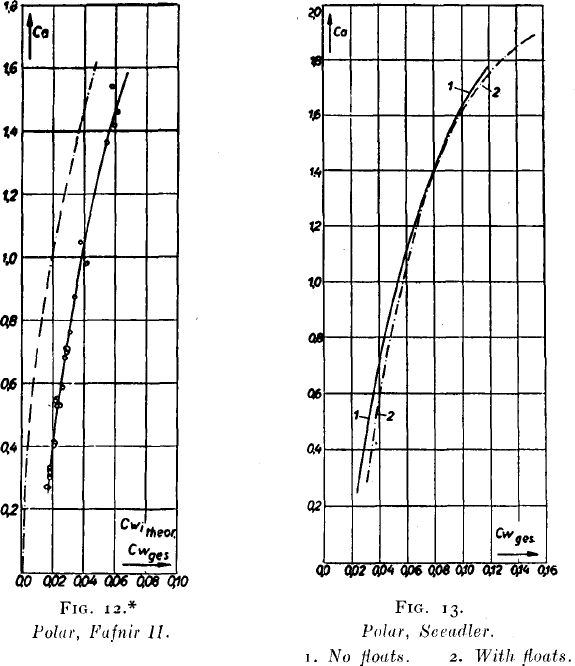No CrossRef data available.
Article contents
Some Sailplane Design Data and Information from German Sources
Published online by Cambridge University Press: 28 July 2016
Extract
Squadron Leader Buxton has pointed out the lack of basic design data for sailplanes available in English. To alleviate this condition to a certain extent, the following data are presented. All the data arc from German sources and  the Society is indebted to Alexander Lippisch, A.F.R.Ae.S., and to the Deutsche Forschungsanstalt fuer Segelflug for much of the information.
the Society is indebted to Alexander Lippisch, A.F.R.Ae.S., and to the Deutsche Forschungsanstalt fuer Segelflug for much of the information.
- Type
- Proceedings
- Information
- Copyright
- Copyright © Royal Aeronautical Society 1938
References
page 701 note * In the polar curves Ca
= CL (lift coefficient), Cwi = CDi, (induced drag coefficient), ![]() (overall drag coefficient).
(overall drag coefficient).
page 702 note * ” Flugleistungsmessungen an verschiedenen Segelflugzeugen “ von W. Spilger. Jahrbuch 1937 der Deutschen Luftfahrtforschung, p. 1–293.
page 706 note * Luftbremsen fuer Segelflugzeuge “ von Hans Jacobs. “ Luftwissen,” Bel. 4 (1937), Nr. 7.
page 711 note * “ Leichtmetallkonstruktion im Segelflugzeugbau “ von L. Roth. Lilienthal-Gesellschaft fuer Luftfahrtforschung, Jahrbuch 1936.
page 716 note * Stress Group 1 includes all gliders having aspect ratios (b2/S) not greater than 9 Stress Group 2 includes all other gliders and sailplanes excepting aerobatic types, for which there are as yet no published official requirements.
page 720 note * In the case of the action of gusts on the wing unit, the air force of the initial state acts on the horizontal tail unit.
page 726 note * The approximation method given below has been checked for wing forms similar to those represented in Fig. 32a.
page 734 note * Accelerations and angular accelerations are thus obtained which are equal and opposite to the derivatives of velocity or angular velocity with relation to time.


